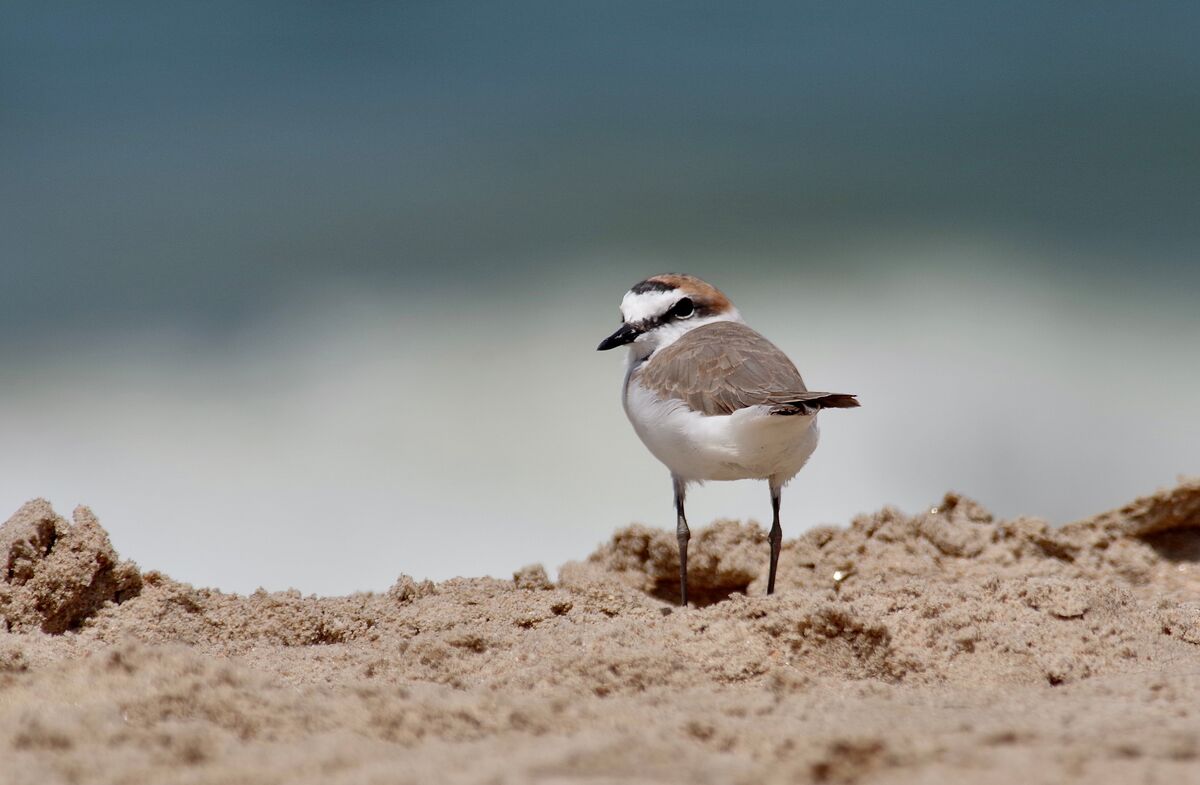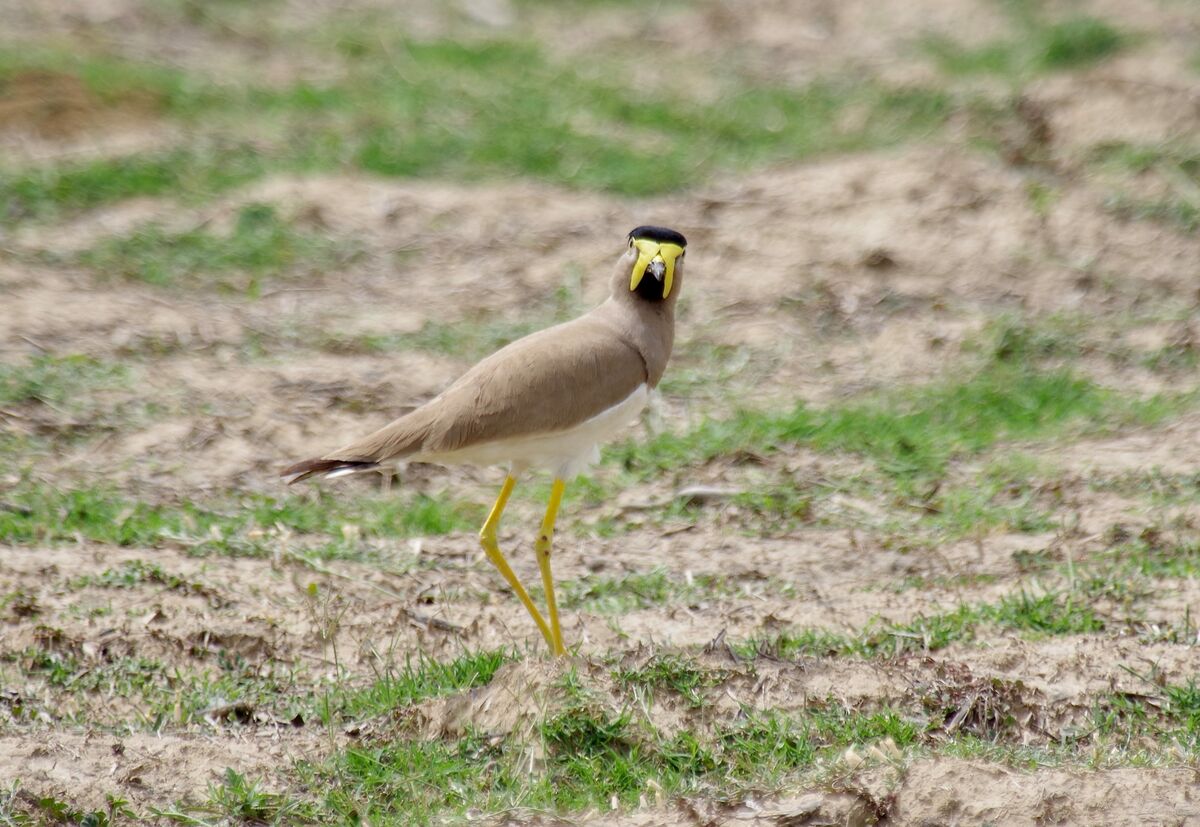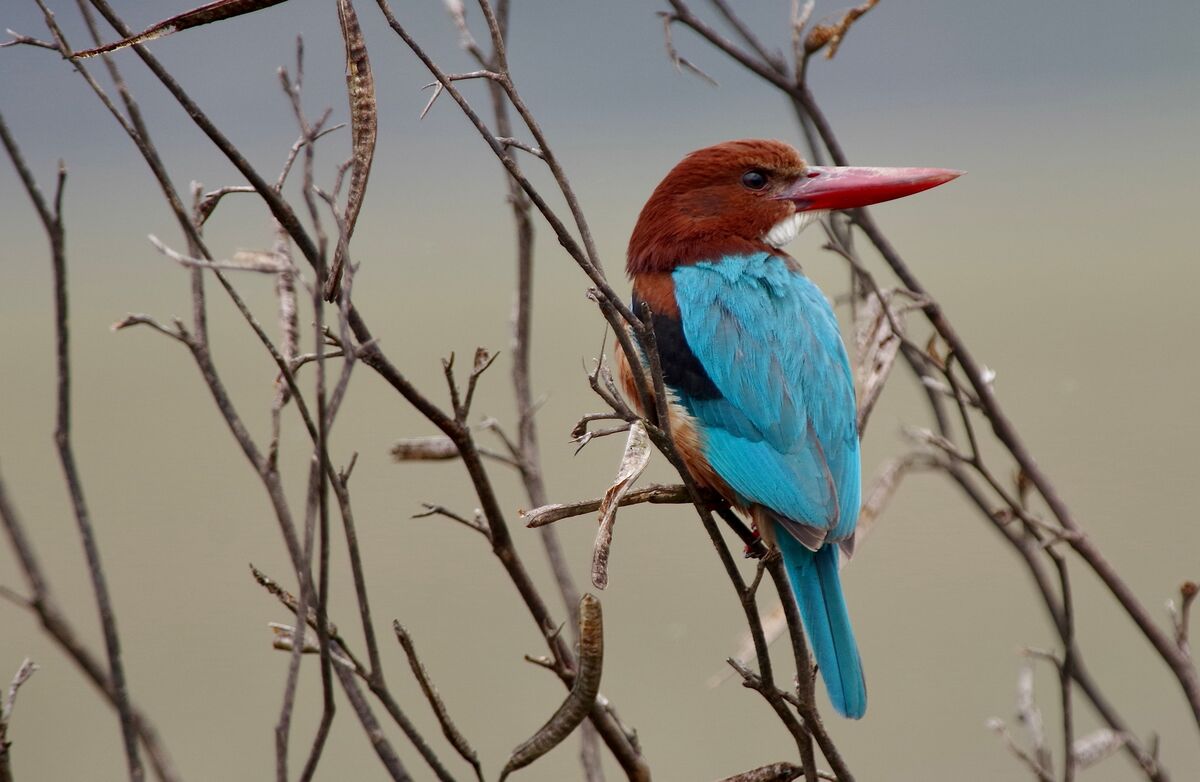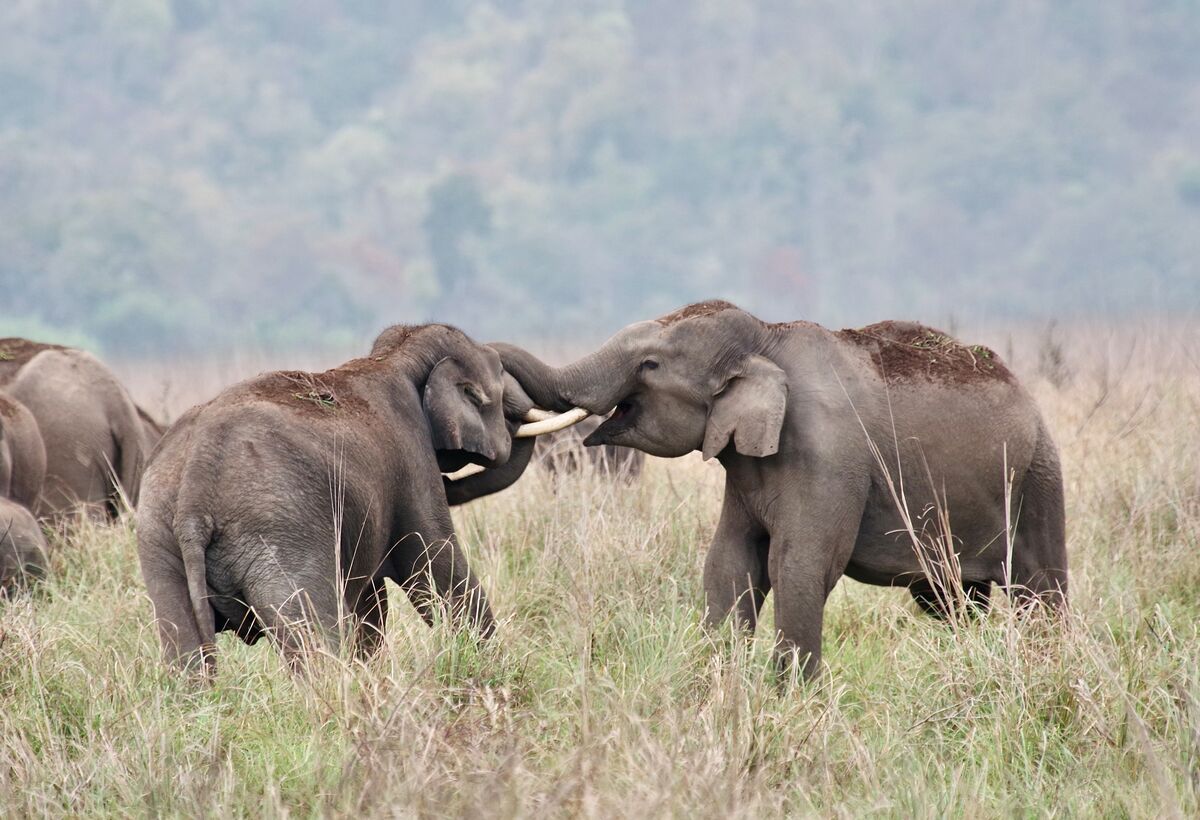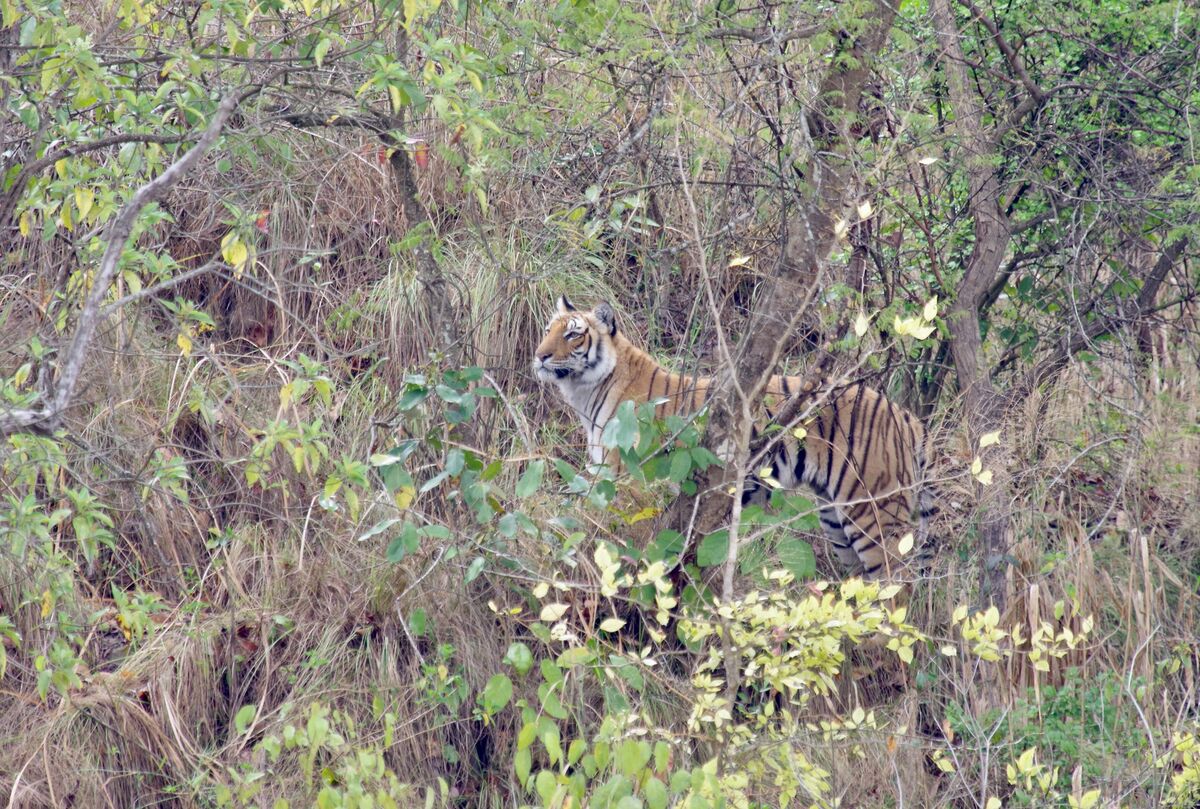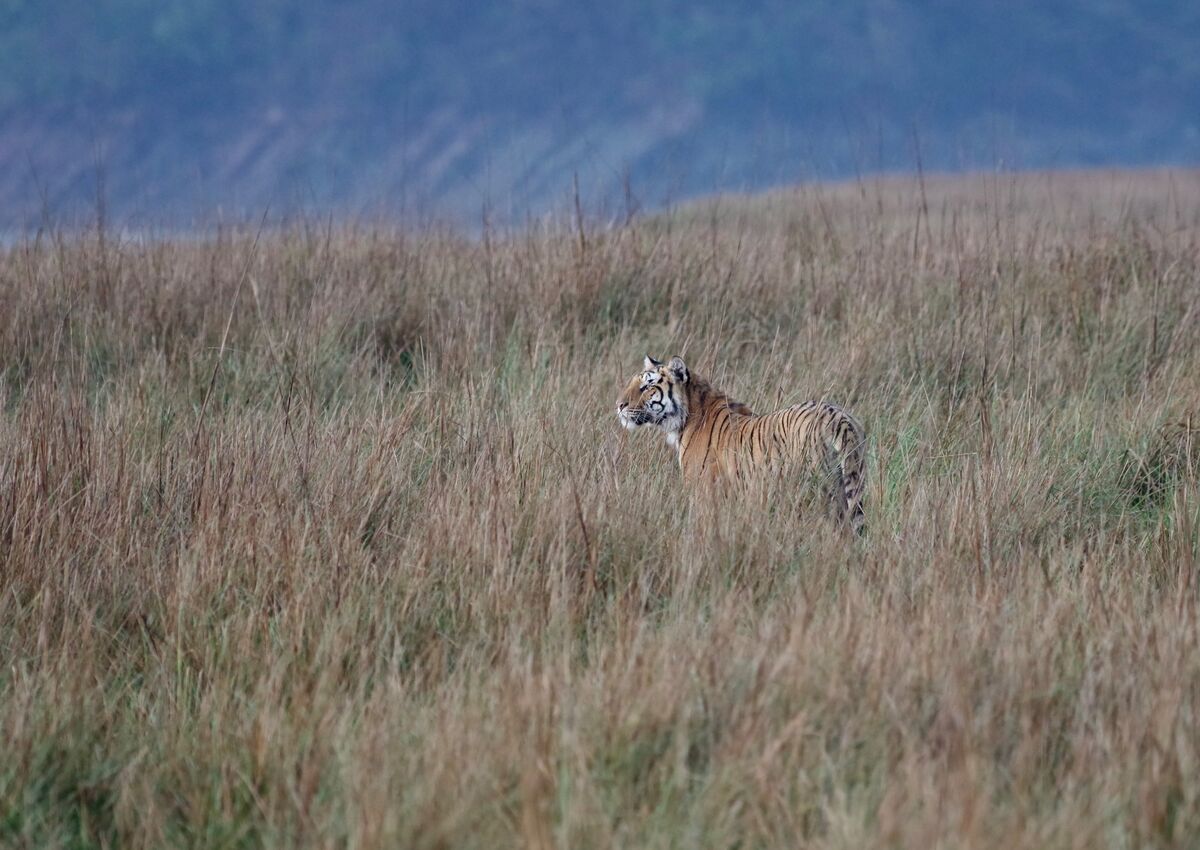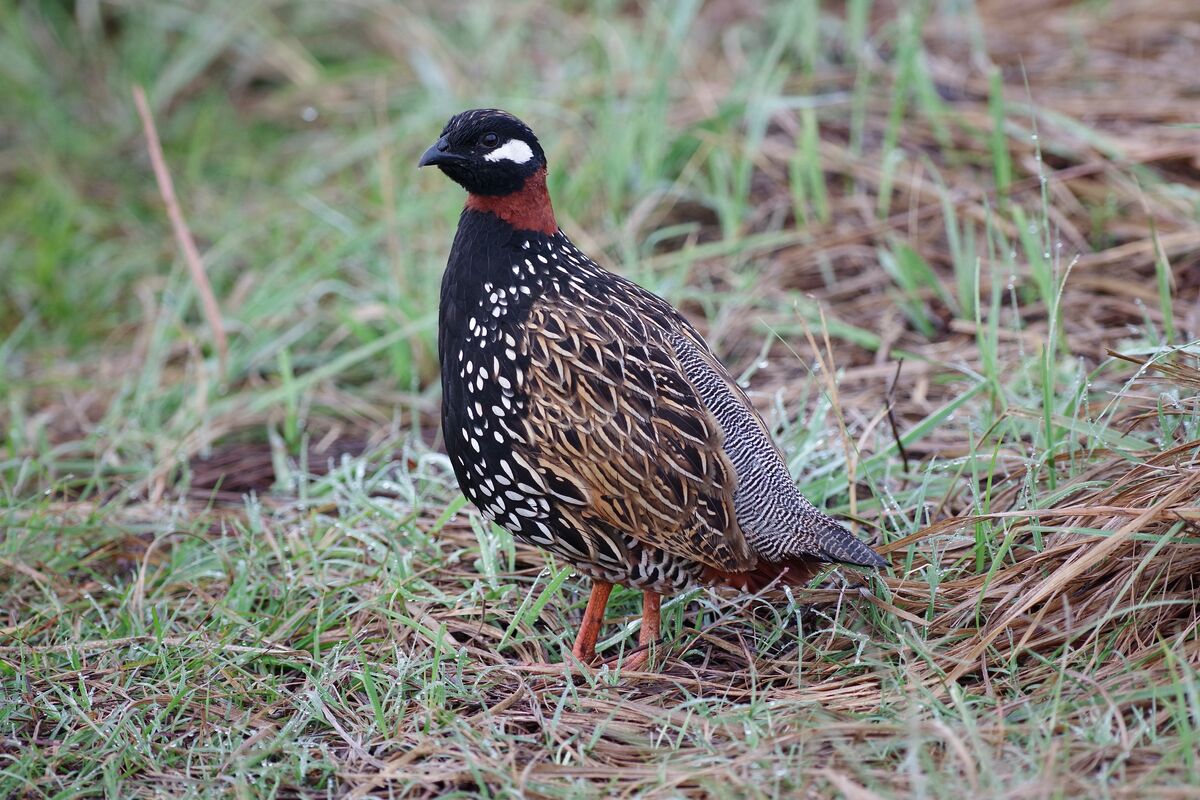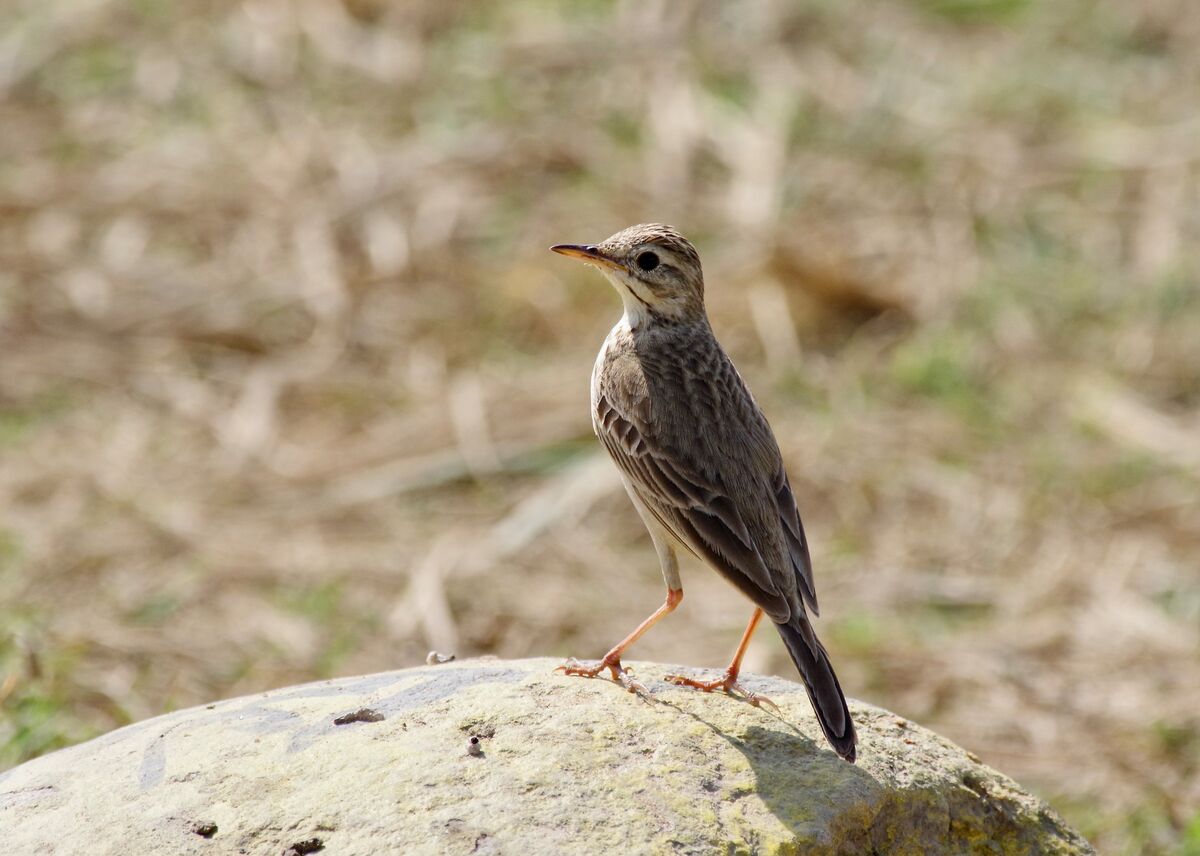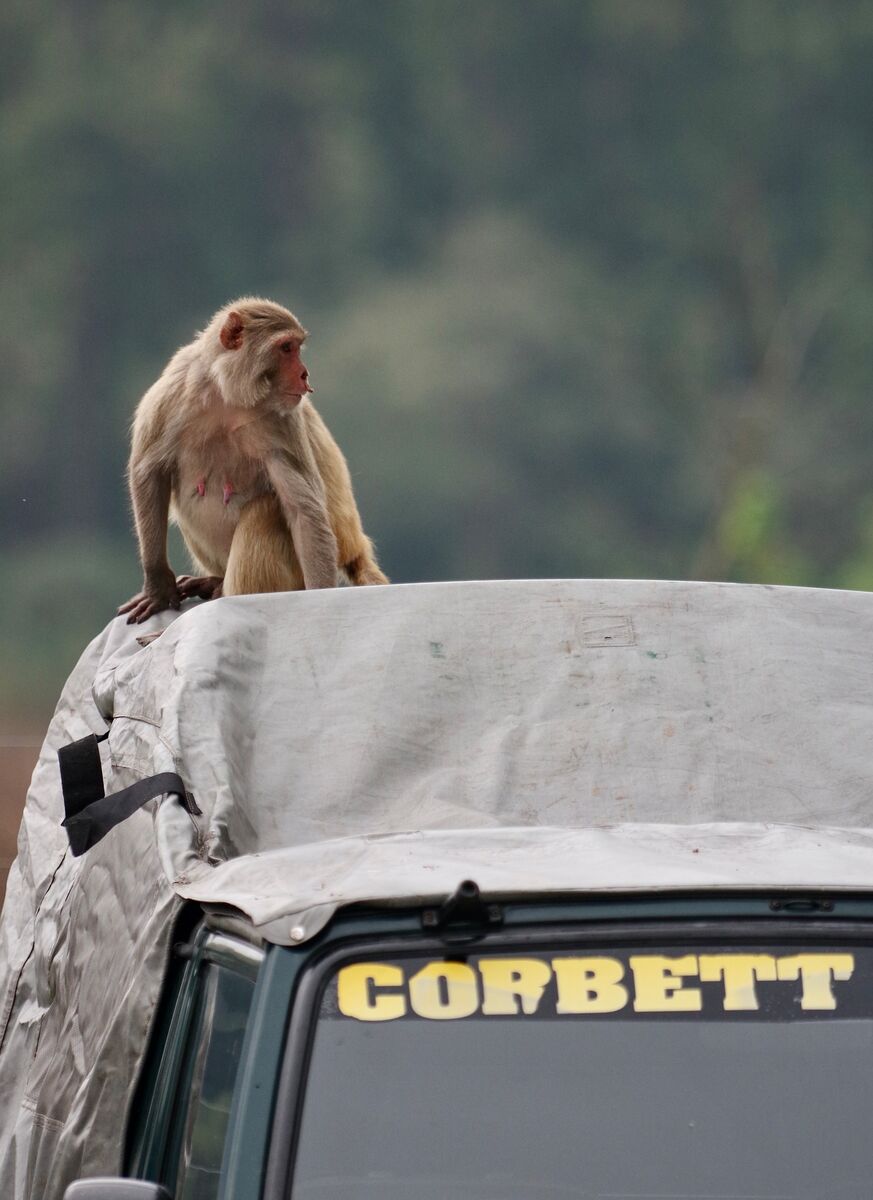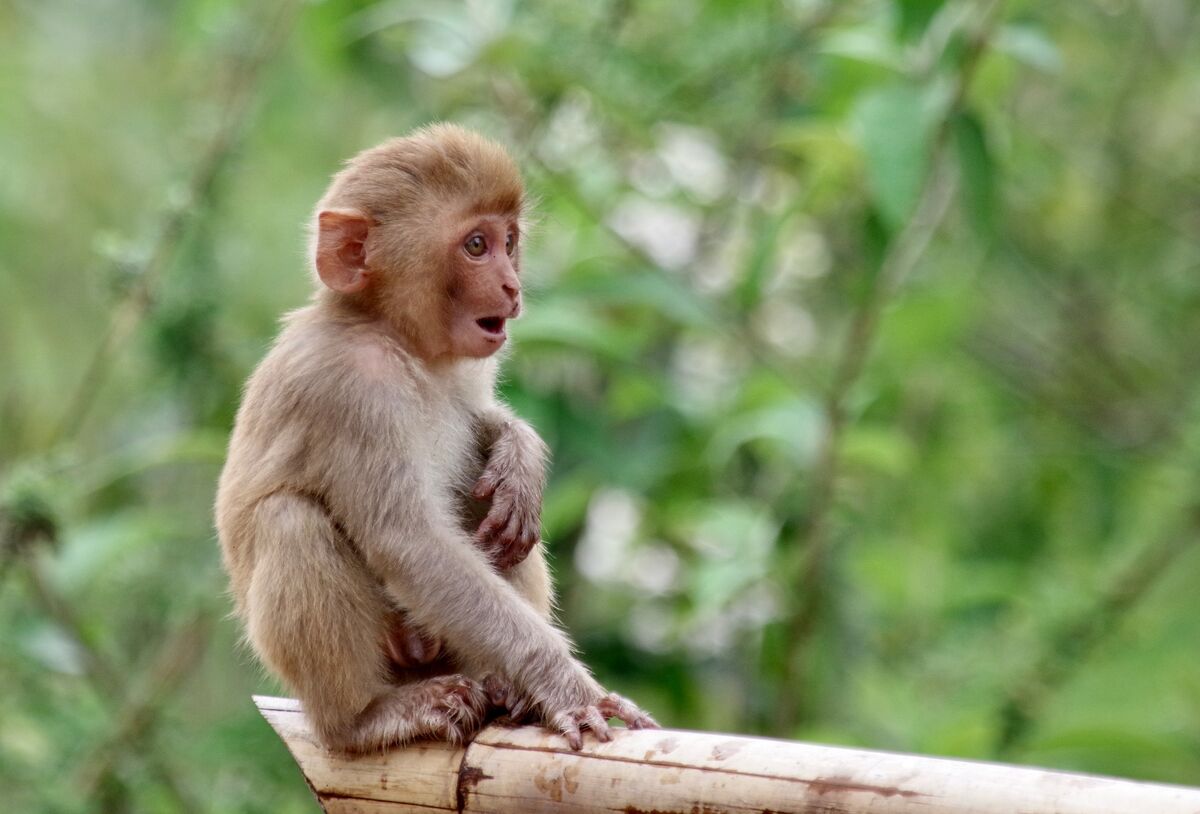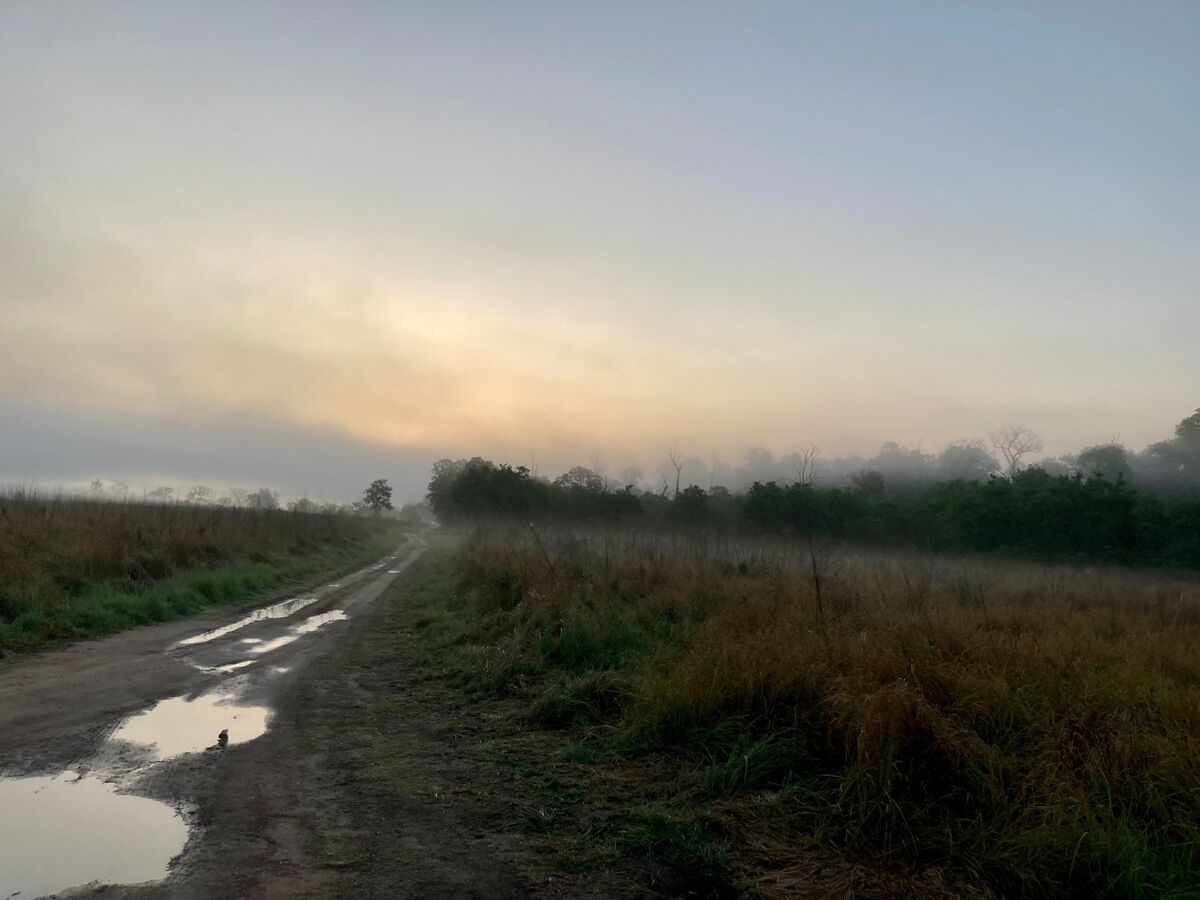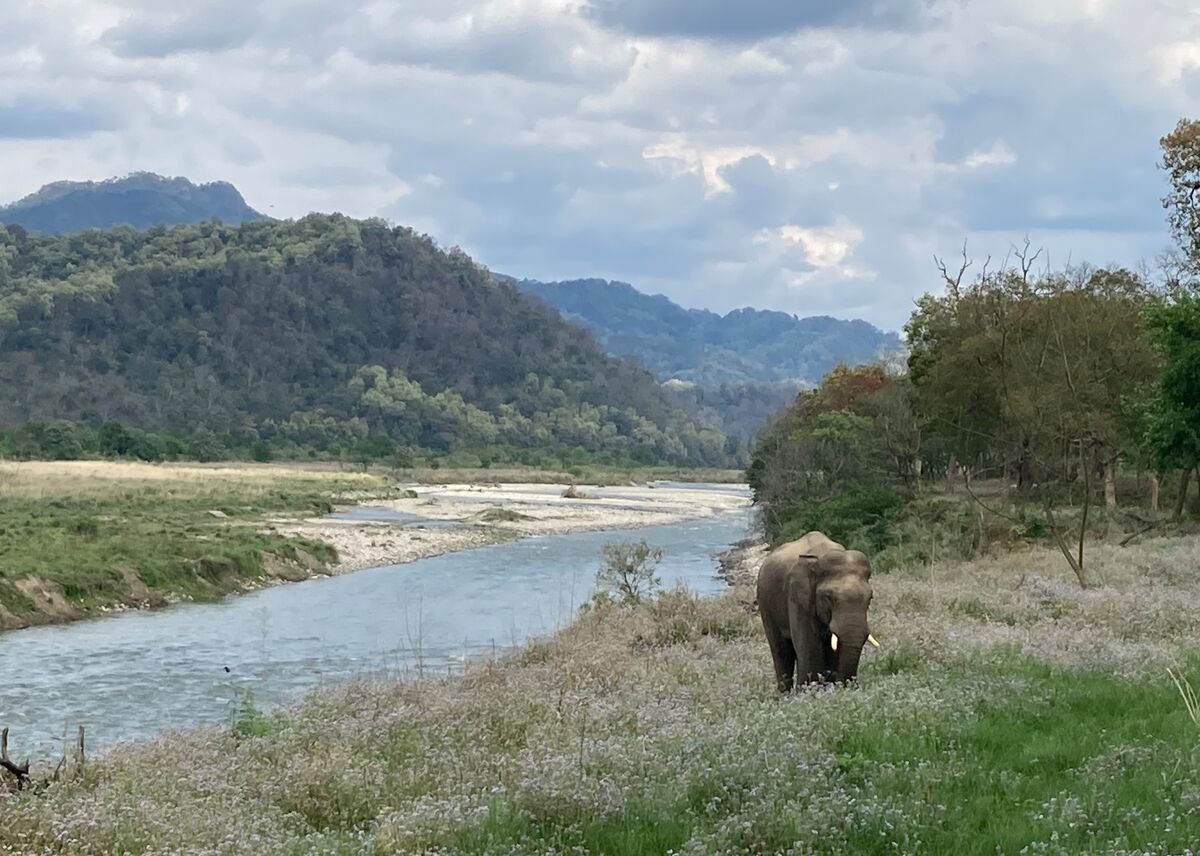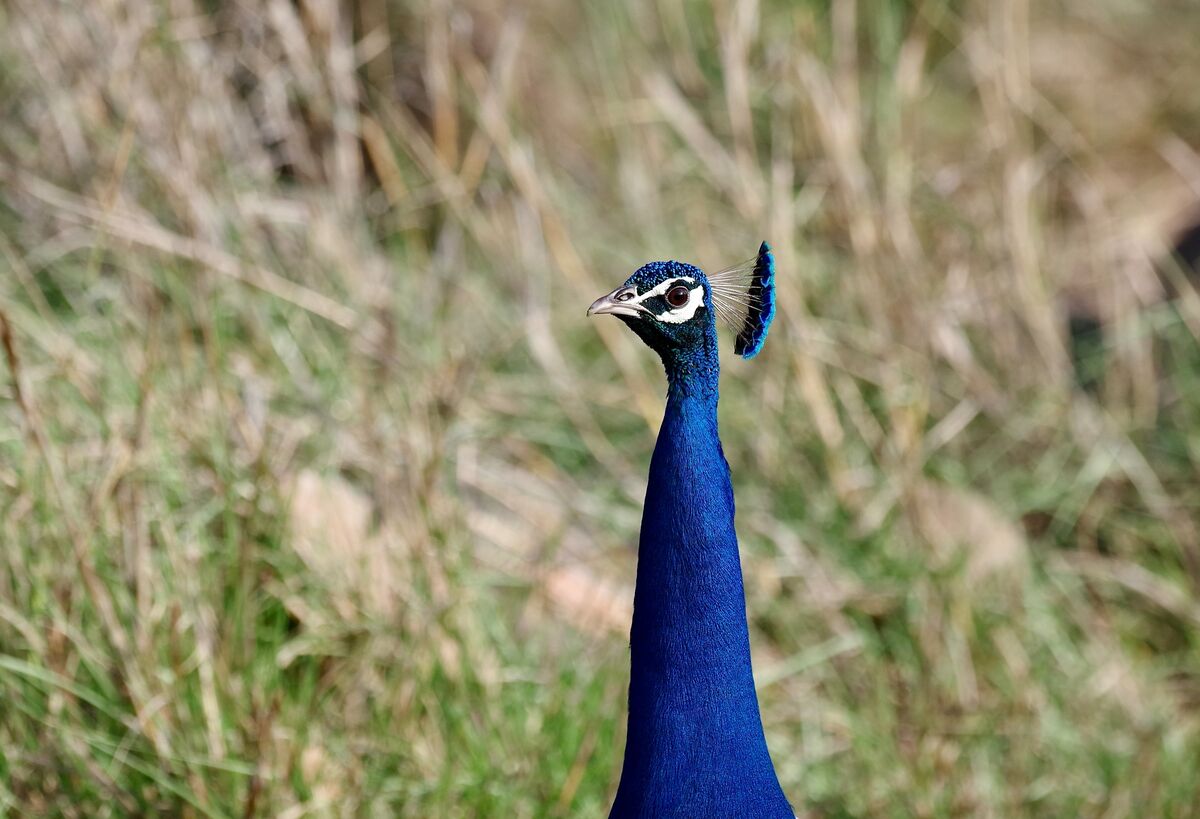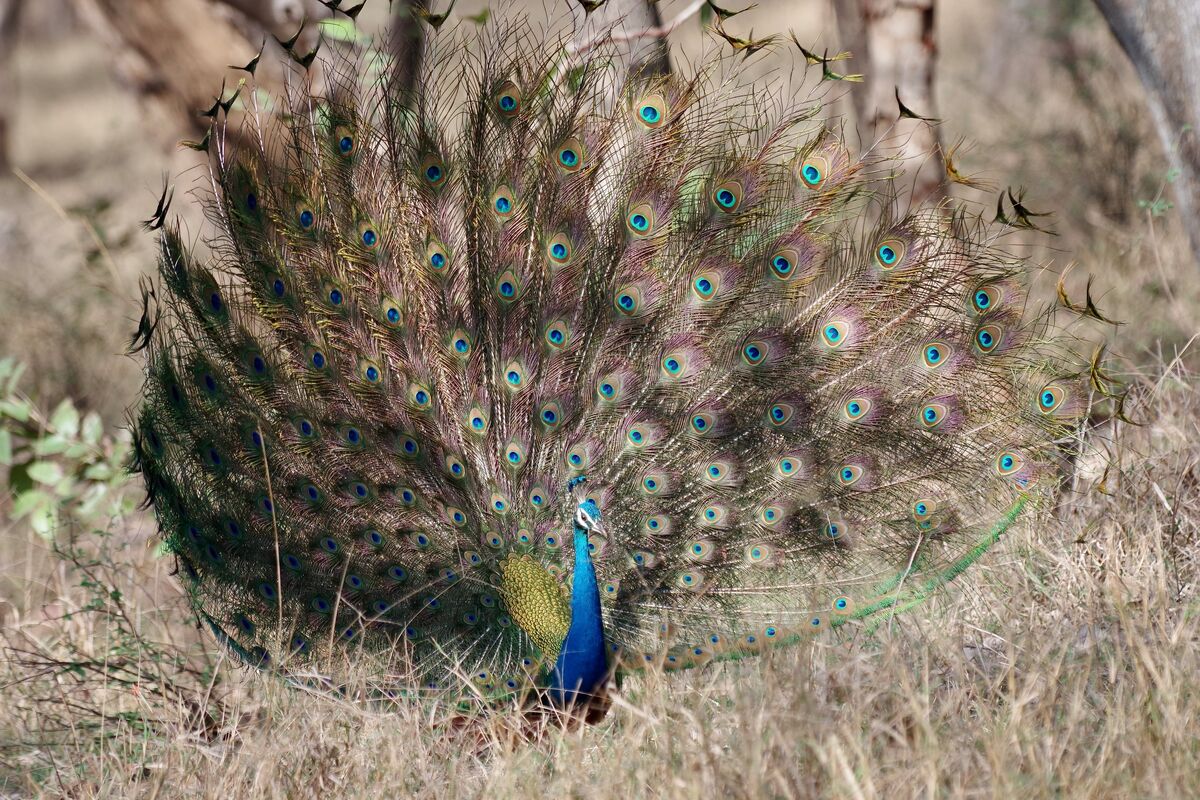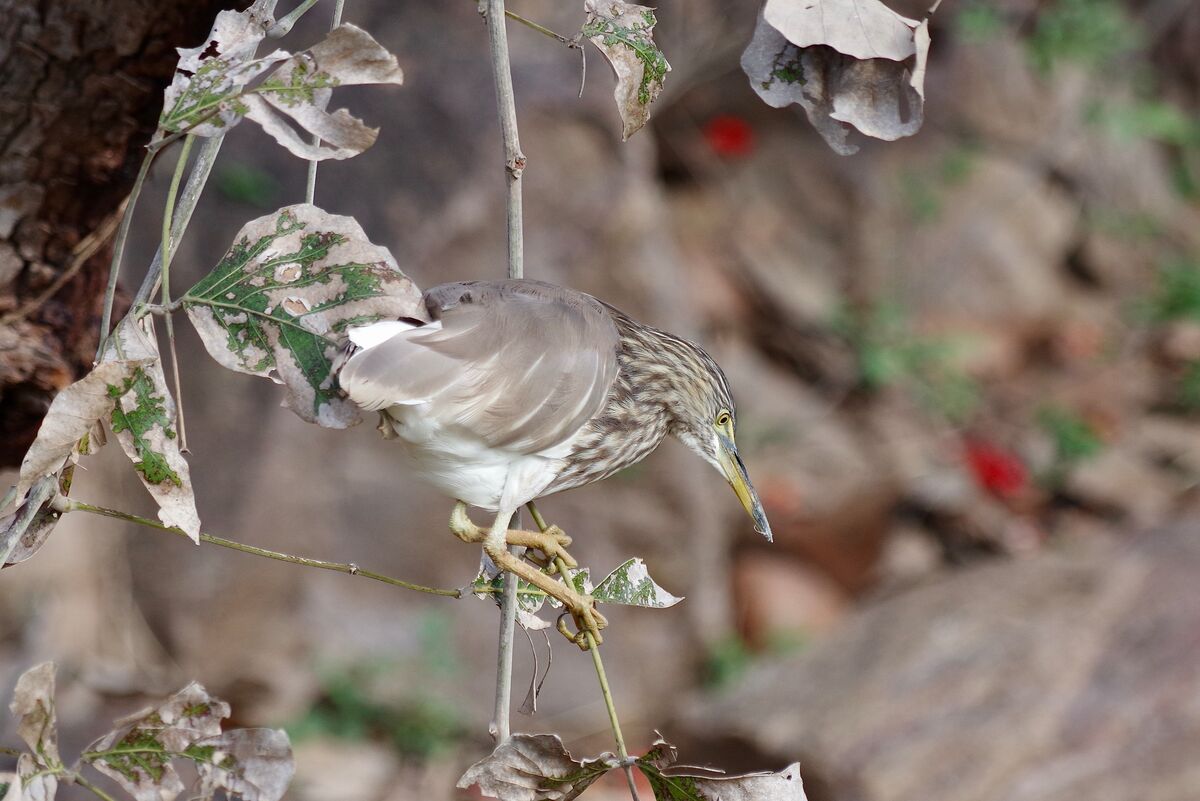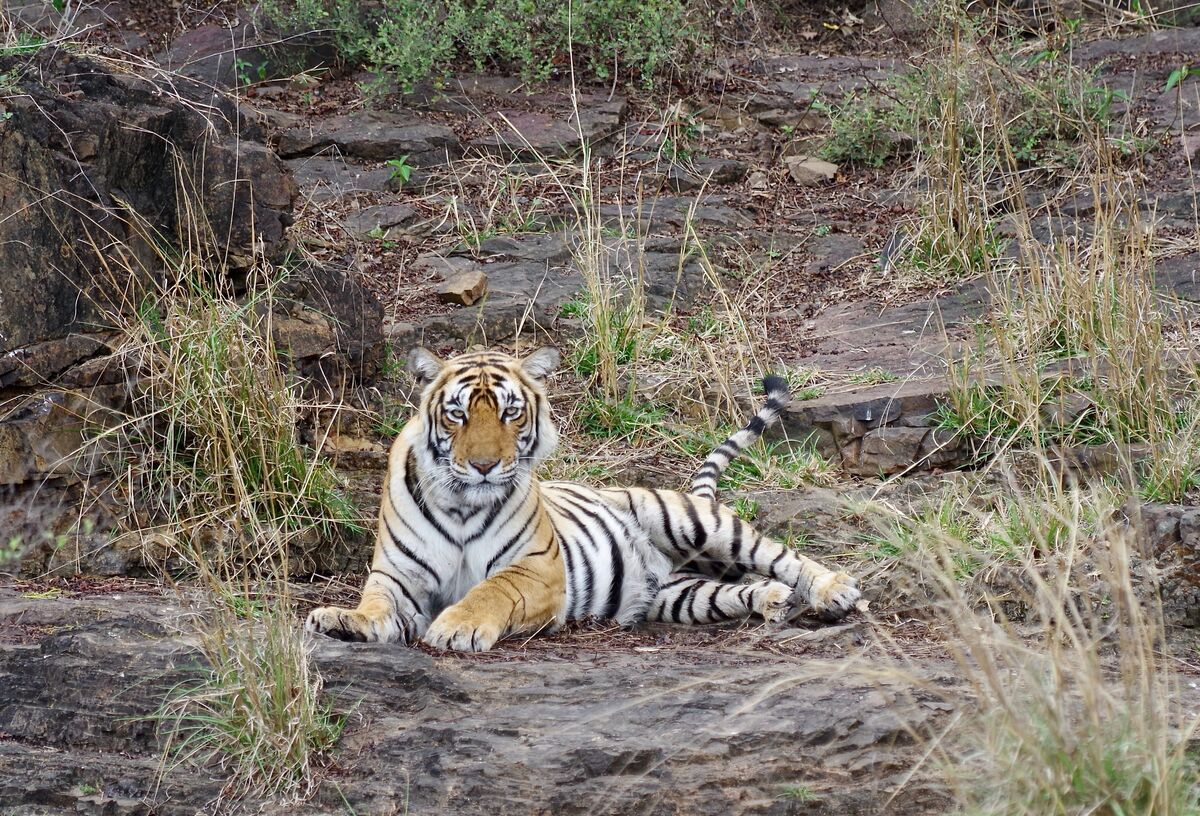Leif Rydell
India part 3, Tiger.
So this is my third and last part of the 38 days I spent in India. My plan was to stay one more week around Sattal after returning from the northern Himalayas. As my stomach was still in rather bad shape I felt I needed some change. Therefor I booked a flight to Goa which is a heaven for beach, party and Yoga lovers. As the beaches stretch more than 100 km, there are different types of places depending on what you want to do. I chose one just south of the airport which is very quiet. I just spent time here biking around and taking long walks on the beach. I had some problem with my lens so many photos were a no use. This Kentish Plover from my beach is one of only a few I could save. Fortunately I found what was wrong for the more important last days.
After 7 days in Goa I flew up to Delhi and was picked up by my driver for the first part, one day in Barathpur. My stomach was pretty bad this day and we had to make a stop at a hospital before continuing. The reason to go here was more or less only to see the Indian Courser. The park itself is not worth visiting this time as all migrants have left and the resident birds live a quiet life, so we went to a place about 10 km north of the park. To my big disappointment we never saw the courser. It had been there the day before and though we spent 7 hours here it never showed up. My guide told me this was the first time he hadn't seen it on this site!! I saw these two lapwings; the Yellow-wattled, the Red-wattled Lapwing and a few very shy Chestnut-bellied Sandgrouse but I have seen them all quite a few times before.
Next to a tree where we parked in the shadow, a group of Bank Mynas were searching for food in the rubbish on the street.
I the went back to Delhi to catch the night train to Ramnagar which is the main hub for the eastern part of Corbett. We slept a few hours before the jeep came and picked us up. For the next 4 days I was invited to stay and do safaris with 4 Indian fellows. 2 of them are doctors and one of the doctor's son also on his way to become one. The fourth man is working for WWF. Is was a great opportunity to go with them and my excellent tour operator had managed to find place in Dhikala zone which is the true hard core place for wildlife. Unfortunately, the government plan to close this fabulous place, so I can call myself lucky to have been there. Here you see all of us at the gate and a pic of the lodge area. On the way from the gate to the lodge, which is almost 1,5 hors drive in to the core area, we saw this roosting Tawny Fish-owl which didn't look too happy to see us.
Weather was much worse than normal for this time of the year and we had plenty of rain which made some of the safaris hard. A lovely moment was when the rain stopped in the afternoon and gave strong colours with the mountains and the grassy area. A stunning White-throated Kingfisher also wanted to enjoy the fresh air after the rain.
The grassy area was is a lovely place to see many elephants and Spotted Deers. Several "families" gathered here especially in the mornings and afternoons. We saw 2 bulls fighting which was a new experience. Here we also searched for and found the West Himalayan Bush-warbler which had been seen the day before. First record for this area.
The jeeps usually choose from the grassy areas or to go to the other side of the Kosi River. The river and its edges are popular sites for both mammals and birds. Here I saw my first tiger ever, which was a fantastic moment and a great relief. Now I had seen one quite far away resting and make small moves and could just hope to see one closer further on. As Shorebirds are my favorite group of birds this hour was one of the most memorable occasions, when we also spotted our first River Lapwing close up.
Corbett is well known as the oldest and biggest national park in India and also holds the greatest numbers of tigers of any park. The areas where tourists are allowed are just a fraction of the park itself. That combined with the vegetation which is very thick or covered in high grass makes observations hard. Not many people see tigers in Corbett, except for the lucky ones that makes it to Dhikala. My second tiger here was in high grass and we stood still for quite a while waiting for it to rise. One jeep had seen it for a few seconds and were pointing at the spot where it was resting. After almost an hour it rise and moved away. We had decent looks at it before disappearing in to the higher grass again. Here we also saw a splendid male Black Francolin, a proud Paddyfield Pipit and the ever present Pied Bushchat.
Monkeys are present at most places in nature habit and people are around. The seem to specialize in finding food in the jeeps. This guy (an old one and the baby one) liked to break themselves in to the jeeps during lunch breaks in hope to find some snacks.
As said before, rains were heavy a few times. Obviously, you will not stay at the lodge though raining. Time is precious during these few hours you have the opportunity. But it also meant some special moments according to nature. This Elephant and the drained track and dizzy landscape are examples of this.
Though I still had some severe pain in my stomach, thankfully reduced by help of my Indian friends I loved this part of the trip and even if we look happy here it was sad to leave this marvelous spot.
Anyway, time for the next and also last destination of the trip, Ranthambore NP. The trip there was made by train and once more I entered a night train, this time towards Jaipur where I had a half day before my afternoon train to Sawai Madhopur which is the town next to the park. Jaipur is famous for being one of the most beautiful towns in India. I hired a taxi for a half day and visited the most famous sites. Here a street view near the Water Fort, a pic of the big Amber Fort and a man at a local factory producing world famous hand made fabrics.
Ranthambore is perhaps the most "famous" tiger park in India. The fact that it is the closest one to Delhi, relatively open in nature structure for easier spottings and full of tigers make this park the hot spot number one. That means plenty of people! The good thing is that each zone (10 of them), have a limit amount of jeeps and canteens to enter. All parks in India have the structure that they provide two safaris each day, one morning and one in the afternoon. You always go back to your lodge/ hotel for lunch and rest for about 4 hours before going back in the afternoon. This differs from most park in Africa where you usually are out all day. This is a famous spot at one of the entrances whit winding roots around the walls. You can see a Peacock on the road. This bird is extremely beautiful and also very common in the park.
On my first safari I didn´t see tigers but it was during this first one I saw my only Sloth Bears. Two of them were looking for ants just by the track. They were moving constantly so getting a decent picture wasn't easy. This was the best shot I could get before they proceeded in to the forest.
In zone 2 where I saw the bears there are lots of smaller patches of water which attracts some birds. I had good views of this Brahaminy Starling which was a new tick and also of several Indian Pond Herons waiting for a catch.
It was not until my third safari I saw my first tiger here. Actually this individual was the only one I saw. Riddih is her name. She is about 4 years old and hardly a ridiculous creature. This first sighting was when she was resting at a cliff about 200 meters away. After about 2 hours she yawned 3 times and rose. Lucky for us she didn't go backwards but headed sideways. She disappeared behind a big rock but then came in to great views for about 30 seconds before disappearing in high grass. The last day we saw her again. She was walking slowly quite far away from us and we also had the sun in our eyes which made the observations rather difficult. I'm glad I had my binoculars (most people didn't as they just carry cameras), so I got to see her starting a hunt. She caught a big male Wildboar and the fight was very heavy. She dragged him in to the water and it took almost 4 minutes before you could see the desperate moves of the Wildboar stop. Great experience!!
As said before, it had rained a lot more than usual, which made the park much wetter than normally this time of the year. In April to June tiger sightings is more or less guaranteed but this year many smaller pools did not force the tigers to visit the bigger lakes. A very special bird is theh Great Thick-knee and we were lucky to see it up close with a chic which made the guide surprised. The Painted Stork was not plentiful but easy to observe as the always keep next to the shore of the lakes. 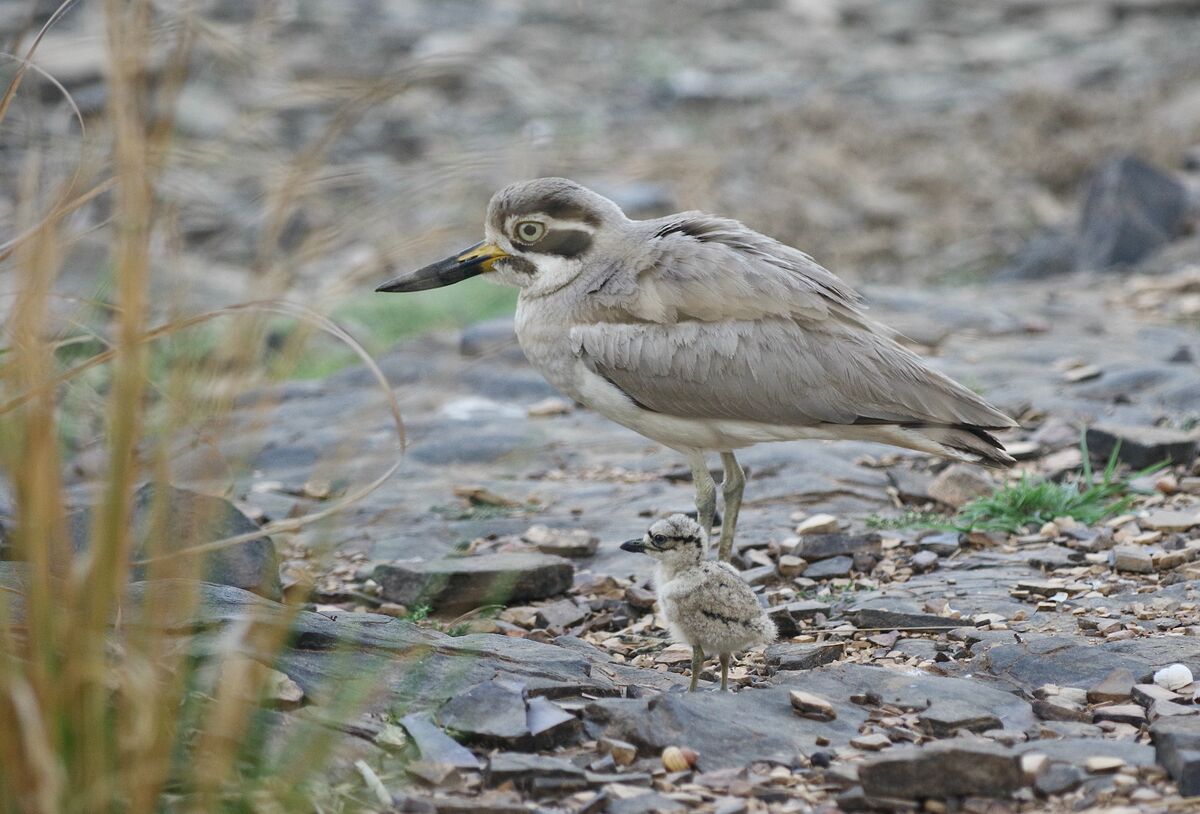
As the sun was getting closer to the horizon we stopped at the biggest lake with the fort at the back drop. Around here we had several Spotted Deers coming for an afternoon drink as well as this handsome Black-winged Kite. The last bird before leaving the park was this day roosting Indian Scoops Owl.
If interested in all bird sightings, you can check it up on my profile at Ebird. ebird.org (Leryd24, Leif Rydell)
Bye bye India!!

